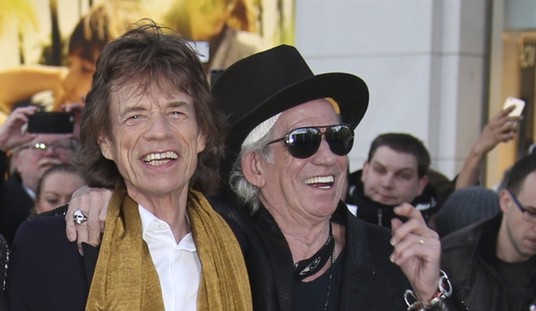The more things change at ABC…
Noel Sheppard, Newsbusters, December 11th, 2010: “Barbara Walters Edits Mark Levin’s Book From Palin’s Reading List Answer:”
On Thursday, NewsBusters made it clear that no matter how Sarah Palin answered Katie Couric’s pathetic reading list question back in 2008, the liberal media were going to ridicule her.
On Friday, this point was made even clearer when Mark Levin told his radio listeners that Palin’s answer to Barbara Walters’ same question on ABC’s “10 Most Fascinating People of 2010” was edited to remove his book “Liberty and Tyranny” (audio [at the Newsbusters site] follows courtesy Right Scoop):
…The More They Stay The Same:
Robert Bidinotto, Men’s News Daily, September 14, 2008, “A Public Challenge to Charles Gibson at ABC News:”
I do not criticize your tough questioning of the governor — that’s a journalist’s job — although I found factual errors embedded in some of your questions.
What I find far more objectionable, even outrageous, however, is the arbitrary and misleading editing of many of Palin’s responses to your questions. Many distortions and misrepresentations about Palin and her views were generated by ABC’s editing, and they appeared across a host of ABC programs (“ABC World News Tonight,” “Nightline,” “Good Morning America,” and “20/20″) over several days of broadcasting.
I say this, again, as a journalist and editor who has conducted, edited, and published any number of interviews. Of course I realize the need to condense an excessively long interview to fit the requirements of page space or broadcast time. However, journalistic objectivity and integrity require that editorial condensations do not distort what the interview subject means to convey, thereby generating false impressions about the subject’s views, intellect, responsiveness, and honesty.
But that’s exactly what ABC did in its various broadcasts of Palin interview excerpts. Two manipulative editing techniques stand out in particular:
1. In all of the shows on which excerpts from the interview were broadcast, the videotape editors rarely let Palin finish a thought with a full reply. Instead, they selected only a fragmentary response, sometimes even cutting her off in mid-sentence. Any viewer can see this for himself, by the abruptness of the cutaways from her words followed by awkward jump-cuts to something else. This often left false impressions about her responsiveness to questions, the extent of her knowledge, and the nuances of her positions.
2. Watching the various ABC shows scattered over two days, I also discovered that their editors broadcast different fragmentary replies by Palin to the same questions. One could know that only by watching all of those shows and comparing which of several Palin responses was paired with the same question. On one show, a selected fragment might be so terse, incomplete, and off-point as to make Palin appear to be foolish or evasive; but if one watched a different ABC show, he’d find that its editors had selected a different Palin response to that same question — a response that was thoughtful and on-point.
Such cutting-room antics are transparently non-objective, even dishonest. They contribute to the widespread public view that major media organizations are driven by bias. In any case, they are simply unconscionable for any reputable journalistic outlet.
As Glenn Reynolds wrote in the New York Post back then, “Bring Your Own Camera” when doing a TV interview:
CHARLIE Gibson’s ABC interview with Republican veep candidate Sarah Palin produced a lot of complaints from Palin fans. There’s not much anyone in the campaign can do about journalists like Gibson misstating candidates’ “exact words,” but there is something that candidates – and anyone else interviewed by a possibly hostile media – can do to make sure that things get played straight in the editing process.
You just have to break the camera monopoly. Luckily, that’s become easy.
An episode of “The Simpsons” a few years back centered on Homer facing bogus sexual-harassment charges. A TV news show (“Rock Bottom”) interviewed him and edited his innocuous statements to make them sound incriminating. (To make the joke clear, the hands on a clock in the background were in a different position for almost every word). Ultimately, Homer was saved only because Groundskeeper Willie turned out to have shot video that exonerated him.
Real life isn’t “The Simpsons” (though politics are seeming more and more cartoonish these days). Still, TV is all about the editing – and even modest tweaks can drastically change how an interviewee comes across.
So, when you sit down for an interview (unless it’s live), you’re putting yourself, like Homer, at the mercy of the editors. Usually they’re honest, but not always.
But there’s a remedy now, with technology being what it is. If I were a candidate, I think I’d bring my own camera to interviews, shoot the whole thing and post the unedited raw video on the Web.
The technology for this is easy – I’ve got a little Sony HD video camera that records on a chip and fits in a coat pocket or purse – and putting video on the Web is a snap, too.
Of course, the knowledge that this will happen is likely to be enough to keep people honest – but if anything is edited unfairly, the full video will tell the tale. No need to wait for Groundskeeper Willie to appear.
TV journalists won’t be happy with this, of course, but it’s hard to see a principled basis for objecting.
Especially not when a conservative politician has been burned twice now by ABC’s “liberal” producers.










Join the conversation as a VIP Member